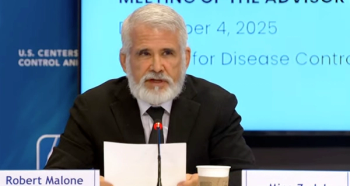
How prospective payment models can transform primary care
Moving away from fee-for-service would spur innovation, team-based care
By some estimates,
The big question facing these would-be industry disruptors: How can
A Bloomberg News
Certainly, it’s a step in the right direction. Fee-for-service has never been right for primary care because it’s based on a service delivery model that rewards reactive, transactional, minimally functional interactions. As a result, primary care providers (PCPs) feel forced to manage every day in 15-minute increments and struggle to jam in as many appointments as possible.
Moving from fee-for-service to value-based care changes this, but only in an iterative way. Instead, and more specifically, we should be pushing for value-based care that relies on prospective payment models, which can drive transformative change for health care. Here’s how:
Prospective payment unlocks innovation. The move toward value-based care in a prospective payment model upends the way we’ve historically defined primary care delivery. It is no longer just the time spent in an exam room or on a telehealth call. By putting greater emphasis on outcomes instead of appointments, care can extend beyond regular office hours and real-time interactions. Providers can lean on teams and technologies to support patients with care coordination, social services and other resources that address social determinants of health and provide peace of mind along the patient’s health journey.
Prospective payment enables team-based care delivery. The modified payment structure more completely and fairly encompasses the care coordination and management efforts that primary care providers and their teams deliver and extends them further. This vital work is often unaccounted for in traditional reimbursement models. Aligning the continuous, proactive engagement between physicians and patients—combined with payment incentives that reward this method of care delivery—creates the opportunity for PCPs to improve patient experience and outcomes in a financially viable way.
Prospective payment fosters relationships. Incentivized to create patient value instead of just patient volume, PCPs can spend the time necessary to build connections and trust with their patients. This trust and greater personal rapport produce better patient health management, more opportunity for earlier detection and intervention and overall patient wellness. All that produces better outcomes and decreases total health care costs for patients and payers.
Finally, PCPs are empowered to fulfill the promise of what primary care was always meant to be: personal, relational, trusted. And patients that know and are known by their providers and can access the right expertise and resources whenever necessary.
As idyllic and logical as this shift might seem, one perhaps-surprising challenge ahead includes shifting attitudes among more PCPs. At a recent conference hosted by Catalyst and attended by nearly 400 providers, about half self-identified as early and enthusiastic adopters for prospective payment models. Another third said they’d take a wait-and-see approach. The remaining respondents expressed skepticism about prospective payment generally.
Part of this response stems from the fact that all these providers have found a way of working in our current, broken care delivery system. And part of it can be attributed to a general reluctance to tackle the challenges of change.
But it also points to the need for payers to implement prospective payment models more quickly and across broader patient populations. The government is leading the way with programs like Medicare Advantage and ACO REACH. But it’s time to go further. Doing so moves us further away from the “sick care” system we have today to one that can truly and finally be described as health care.
Crow is CEO and co-founder of Catalyst Health Group
Newsletter
Stay informed and empowered with Medical Economics enewsletter, delivering expert insights, financial strategies, practice management tips and technology trends — tailored for today’s physicians.















